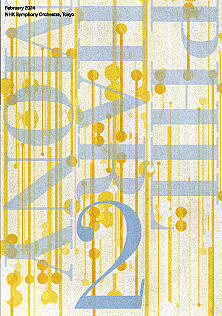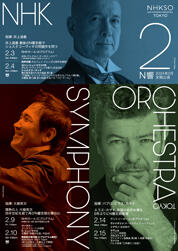- Home
- Concerts
- Subscription Concerts 2023-2024
- Program C
- No. 2005 Subscription (Program C)
Subscription Concerts 2023-2024Program C
No. 2005 Subscription (Program C)
NHK Hall
Google Map Seating Chart
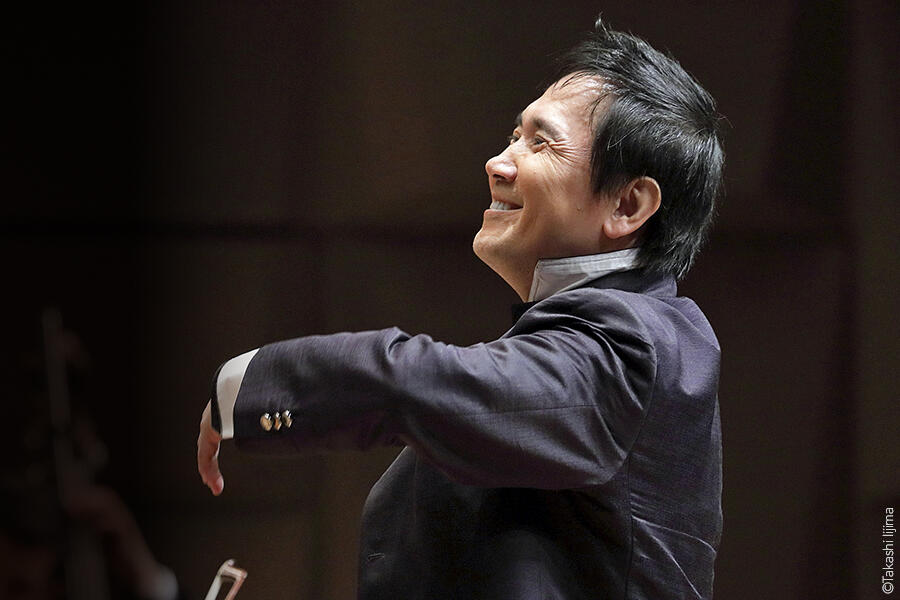
Program
Wagner / Siegfried Idyll
Among Wagner’s operas, the most heroic character is likely Siegfried (appearing in Siegfried and Götterdämmerung [Twilight of the Gods] from Der Ring des Nibelungen [the Ring of the Nibelung]), the mortal grandson of the ruler of the gods. Wagner named his son after the fearless hero – future conductor and composer Siegfried Wagner – whose mother Cosima is Franz Liszt’s daughter.
Wagner’s Siegfried Idyll for a chamber orchestra is an exceptionally small piece compared to his other sizable operatic works. He composed it as a birthday and Christmas present for his wife Cosima to thank her for giving birth to their now-eighteen-month-old Siegfried. It was premiered in private: on Christmas morning in 1870, it was performed by fifteen musicians on the staircase of Wagner’s villa on the shore of Lake Lucerne to awake Cosima as a great surprise. He later touched it up and published it in 1878.
Siegfried Idyll has several motifs/themes common to Wagner’s then-ongoing project, the Ring cycle (premiered in 1876), especially its third part Siegfried. The most symbolic is the main melody given by the first violins at the beginning of Idyll: the same melody is sung by Brünnhilde, just awakened by Siegfried, during their extended love duet in Act 3 of Siegfried. The long blithe solo by the horn – Siegfried’s attribute – in the midst of Idyll is also heard toward the end of the same love duet of the opera with Siegfried singing “Laughing, you wake in gladness to me!”
[Kumiko Nishi]
R. Strauss / Ein Heldenleben, symphonic poem Op. 40 (A Hero’s Life)
The composer whose music is tied to the notion of the hero most tightly is surely Beethoven. He even named his third symphony (1804) eroica (heroic) reusing a theme from his Die Geschöpfe des Prometheus (The Creatures of Prometheus) a ballet about the heroic Greek god. Beethoven himself embodies the hero as well for he fought against deafness – a vital blow to a musician – to create revolutionary and philanthropic works.
In the Romantic period, R. Strauss who was already a big name both as a composer and conductor followed Beethoven’s footsteps: the Bavarian composer created what crowned his achievements in the genre of symphonic poem choosing the same subject (hero), home key (E-flat major) and central instrument (horns) as Beethoven’s eroica. After this mighty work entitled Ein Heldenlebenm (A Hero’s Life) (1898), Strauss would never compose a symphonic poem to forge a new path as an opera composer (according to him, Symphonia Domestica [1903] and Eine Alpensinfonie [An Alpine Symphony] [1915] are, though programmatic, not categorized as symphonic poems).
Strauss equivocated on the identification of “a hero.” However, it is generally believed that Ein Heldenleben is autobiographical, except that it was too early for the then-thirty-four-year composer to “look back” at his latter life as he would live to eighty-five. The work consists of six sections (performed seamlessly) with titles, although Strauss didn’t allow them to be printed on the published scores. I Der Held (The Hero) begins with horns and low strings announcing the theme of the hero. II Des Helden Widersacher (The Hero’s Adversaries) ridicules critics who lashed out against the hero, then III Des Helden Gefährtin (The Hero’s Companion) lets the violin solo depict Pauline, Strauss’ variable but lovable wife. A trumpet fanfare opens IV Des Helden Walstatt (The Hero at Battle) followed by V Des Helden Friedenswerke (The Hero’s Works of Peace) where Strauss “auto-quotes” about ten of his previous pieces including the symphonic poems Don Juan and Thus Spoke Zarathustra. VI Des Helden Weltflucht und Vollendung (The Hero’s Retreat from the World and Completion) comes to a calm climax with the horn solo and the violin solo melodies staying together, prior to the closing triumphant brass fanfare.
[Kumiko Nishi]
*This concert will have a duration of 60 to 80 minutes without an interval.
Artists
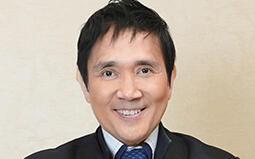 ConductorEiji Oue
ConductorEiji Oue
Eiji Oue, born in Hiroshima Prefecture, studied under Hideo Saito at Toho Gakuen School of Music, and by the invitation of Seiji Ozawa, went to the U.S. in 1978, and studied with Larry Livingston at the New England Conservatory in Boston. He also participated in the Tanglewood Music Festival and met Leonard Bernstein who became his mentor. In 1985, together with Bernstein, he took part in the Hiroshima Peace Concert to conduct Hiroshima Requiem for strings by Tomiko Kojiba. He has held positions with North American orchestras, including Associate Conductor of the Buffalo Philharmonic Orchestra from 1986, Music Director of the Erie Philharmonic since 1991, and ninth Music Director of the Minnesota Orchestra in 1995. In 1998, he became Chief Conductor of the NDR Radiophilharmonie Hannover, and was awarded the title of Honorary Conductor in 2009.
In Japan, he assumed the post of Music Director of the Osaka Philharmonic Orchestra to succeed Takashi Asahina in 2003, while also contributing to promotion of classical music by producing events such as Hoshizora Concert (concert under the star-studded sky) at Osaka Castle Nishi no Maru Garden and the Osaka Classic held at retail showrooms around Midosuji and Nakanoshima in Osaka City. He is now the orchestra’s Conductor Laureate. In the summer of 2005, he conducted Tristan und Isolde at the Bayreuter Festspiele as the first Japanese conductor, and served as Music Director of the Barcelona Symphony Orchestra from 2006 to 2010.
He conducted the NHK Symphony Orchestra for the first time in 1999, and although he returned to the orchestra in 2021 in its special concert after long years of absence, his appearance in the orchestra’s subscription concert on this occasion is after an interval of 25 years.
[Takuya Katagiri, music critic]
Pre-concert Chamber Music Performance
Pre-concert Chamber Music Performance
Program:Dvořák / String Quintet No. 2 G Major, Op. 77 - 1st Mov.
Artists
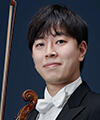
Ryota Kuratomi
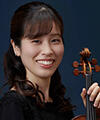
Nana Miyagawa
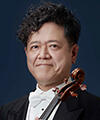
Hiroto Tobisawa
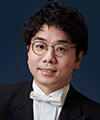
Yukinori Kobatake
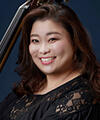
Yoko Yanai
Download
Ticket
Program C
No. 2005 Subscription (Program C)
NHK Hall
Google Map
Seating Chart
Single Tickets Release Date
Pre-sales for Subscribers:Thursday, October 26, 2023
*about subscribers
Sale to General Public:Sunday, October 29, 2023
Price
| S | A | B | C | D | E | |
|---|---|---|---|---|---|---|
| Ordinary Ticket | 7,600 | 6,700 | 5,300 | 4,300 | 3,300 | 1,600 |
| Youth Ticket | 3,500 | 3,000 | 2,400 | 1,900 | 1,400 | 800 |
Seating chart Enlarge Print PDF
*tax included
*Subscribers receive a 10% discount (Available at NHKSO WEB Ticket and N-Kyo Guide)
*For wheelchair-accessible seats, please refer to the N-Kyo Guide
Youth Tickets
Youth Tickets are great options for those of 25 years old and younger
Subscription tickets
Release Date
ANNUAL SUBSCRIPTION TICKETS
Mon., July 17, 2023 10:00am
[For Subscribers: Sun., July 9, 2023 10:00am]
SEASONAL SUBSCRIPTION TICKETS (WINTER)
Tue., Oct. 17, 2023 10:00am
[For Subscribers: Thu., Oct. 12, 2023 10:00am]
Where to buy
NHKSO WEB Ticket | Friday, February 9 (In English / Seats not selectable)
NHKSO WEB Ticket | Saturday, February 10 (In English / Seats not selectable)
NHKSO WEB Ticket (In Japanese only / Seats selectable)
N-Kyo Guide (Purchase by telephone only)
Other Ticket Agents
Broadcast
 NHK-FMNo. 2005 Subscription (Program C)
NHK-FMNo. 2005 Subscription (Program C)
Friday, Feb 9, 2024 7:30PM - 9:10PM
Program:
Wagner / Siegfried Idyll
R. Strauss / Ein Heldenleben, symphonic poem Op. 40 (A Hero’s Life)
*This concert will have a duration of 60 to 80 minutes without an interval.
Conductor:Eiji Oue
Recorded:February 9, 2024 NHK Hall
*Repertoire, conductor, soloists and program order are subject to change without notice.
*Pre-school children are not allowed in the concert hall

